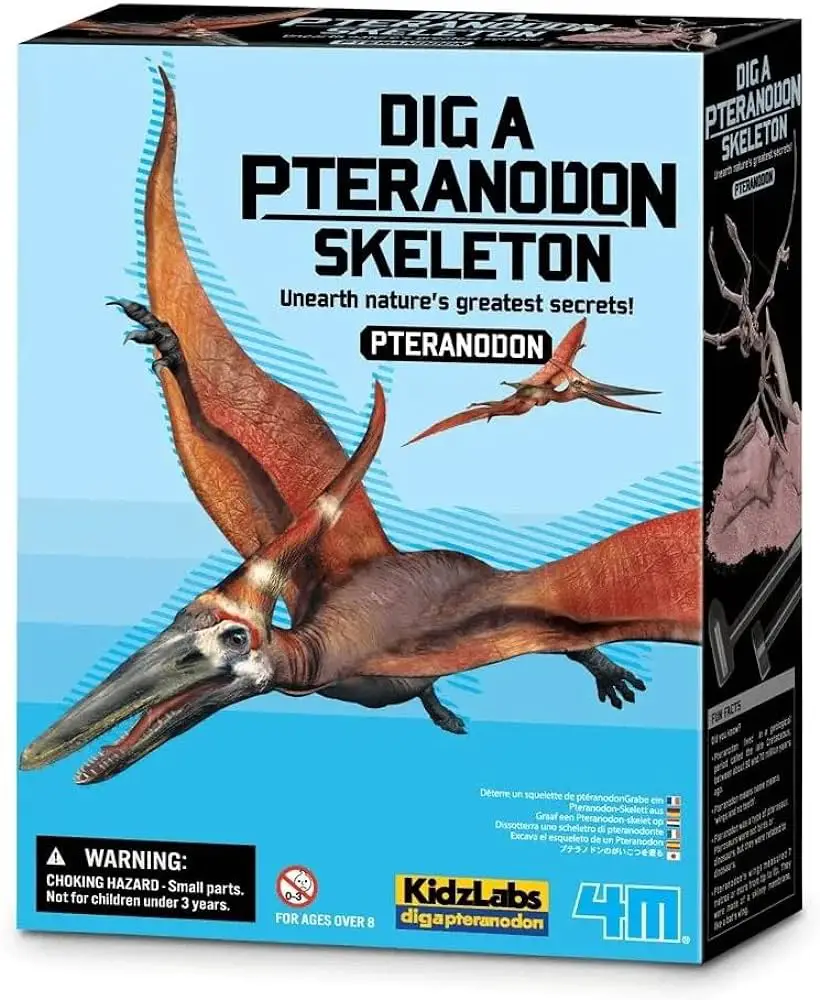Can Dinosaurs Come Back? Reviving Prehistoric Wonders
Dinosaurs cannot come back as they went extinct about 65 million years ago. Modern science lacks the means to resurrect extinct species with no living cells.
Dinosaurs once dominated the Earth, sparking a sense of fascination and curiosity about these magnificent prehistoric creatures. The question of their return has captured the public imagination, fueled by popular culture and scientific inquiry. Despite advancements in genetic engineering and cloning technologies, the revival of dinosaurs remains firmly within the realm of science fiction.
Current de-extinction efforts focus on species with more recent demise, where DNA samples are accessible. The closest we’ve come is studying their living relatives, such as birds and reptiles, to understand more about their ancient ancestors. While the idea of walking with dinosaurs again is tantalizing, the reality is that the science needed to bring back these extraordinary creatures is not within our grasp.

Credit: www.amazon.com

Myth Vs. Reality: Resurrecting Dinosaurs
Dinosaurs have captured our imaginations for generations. The idea of bringing them back to life mesmerizes many. But, what can we really expect from science and storytelling around resurrecting these ancient creatures? Let’s explore the divide between fictional tales and scientific breakthroughs.
Pop Culture Influence
The roar of dinosaurs has echoed through movies and books for years. Stories of these mighty creatures walking the Earth again thrill audiences. Think of the hit series Jurassic Park and Jurassic World. These films show scientists reviving dinosaurs using ancient DNA. But is it just a fantasy?
Reasons why pop culture loves the idea:- Shows human’s triumph over time
- Combines science with adventure
- Brings the past into the present
These stories shape how we view the possibilities. Fans often wonder, “Can this really happen?” The truth lies in the science.
Scientific Possibilities
Let’s turn from the silver screen to the lab. Bringing back a species that has been extinct for millions of years faces huge challenges.
Key scientific hurdles include:| Challenge | Description |
|---|---|
| DNA Degradation | Dinosaur DNA is too old and broken down. |
| Host Species | Need a closely related species to bear the clone. |
| Ecosystem | Dinosaurs need a place to fit in today’s world. |
Scientists study the ancient DNA in fossils. But, finding intact dinosaur DNA is unlikely. DNA breaks down over time. Also, there’s no natural host for incubating a dinosaur embryo. And, even if we could revive a dinosaur, where would they live?
The science points to a different story than the movies. Instead of full dinosaurs, we might learn to recreate some traits in their relatives, like birds. Science opens doors to amazing discoveries. But, bringing back a true dinosaur might forever stay in the realm of fiction.

Credit: www.facebook.com
Deconstructing De-extinction
Imagine a world where mighty dinosaurs roam the earth once again. Could science turn this dream into reality? De-extinction teases the possibility of bringing back species long gone. But what does this involve, and are there current efforts to revive lost species? Let’s unearth the fascinating process and the ongoing attempts to resurrect the past.
What De-extinction Entails
In de-extinction, scientists use cutting-edge technology to recreate extinct animals. We’re talking about genetic engineering and cloning, where DNA plays a starring role. This is not merely science fiction—it’s a glimpse into what the future of conservation could be.
- Extracting DNA: Scientists find DNA in ancient specimens.
- Sequencing genomes: They map out an extinct animal’s genetic blueprint.
- Editing genes: Researchers modify the DNA of a close living relative.
- Embryo development: They implant the edited DNA into a host animal.
- Growth and birth: With careful nurturing, an extinct species takes its first breath in millennia.
Current Efforts In Species Revival
Right now, scientists work tirelessly to bring back lost species. These feats make headlines, and stir debates.
| Species | Method | Progress |
|---|---|---|
| Passenger Pigeon | Genetic engineering | In process, DNA editing |
| Woolly Mammoth | Cloning, CRISPR | Ongoing, embryo development |
| Tasmanian tiger | Gene sequencing | Early stages, DNA extraction |
While recreating dinosaurs may be a more complex challenge, these projects illustrate the promise of de-extinction. Perhaps one day, with advancements in science, even dinosaurs could walk among us once again.
Genetics And Dinosaurs
The idea of dinosaurs roaming the Earth is thrilling. Understanding the genetics behind these ancient creatures could be key to unraveling their mysteries. Could genetics bring dinosaurs back? Let’s dive into the world of ancient DNA and compare what we know from today’s animals.
DNA Degradation Over TimeDna Degradation Over Time
DNA does not last forever. It breaks down over time. The oldest DNA scientists have found is about a million years old. Dinosaurs lived over 65 million years ago. This makes finding their DNA very hard.
Environmental factors also affect DNA preservation. Heat, water, and microbial activity lead to degradation. Most dinosaur fossils are bone with no trace of DNA.
Comparative Genetics with Birds and ReptilesComparative Genetics With Birds And Reptiles
Dinosaurs are part of a family tree that includes birds and reptiles. Studying their genetics gives clues about dinosaurs. Birds are dinosaurs’ closest living relatives.
We use birds and reptiles to understand dinosaur genes. Here’s what we focus on:
- Physical traits: Scales, feathers, and bone structures.
- Behavior: Nesting habits and social interactions.
- Evolution: How species adapt over time.
By comparing, we get a peek into the past. Could we recreate a dinosaur? We might reconstruct some traits through gene editing. But a true dinosaur return remains unlikely.
Technological Roadblocks
Science has jumped many barriers, but bringing back dinosaurs presents big hurdles. The dream of seeing dinosaurs roam the Earth again stirs our imagination. Yet, we face technological roadblocks that make this dream more science fiction than science fact. Let’s dive into the challenges that stand in our way.
Cloning Limitations
Cloning might seem a way to resurrect dinosaurs, but it’s not that simple. We need dinosaur DNA, which is hard to find and often too damaged to use. Even if we find DNA, cloning a full dinosaur from it is beyond our current abilities.
- Intact dinosaur DNA hasn’t been found.
- Most DNA degrades over millions of years.
- Existing cloning techniques require more complete genetic material.
Synthetic Biology Challenges
Synthetic biology could create organism parts, but entire dinosaurs? That’s complex. It means designing new DNA sequences and hoping they function like ancient ones. There’s also the unknown of how these new creatures would impact today’s ecosystems.
| Challenge | Details |
|---|---|
| Synthesizing complete DNA | Creating whole sequences from scratch is not yet possible. |
| Functional Uncertainty | We can’t be sure synthetic parts will work together. |
| Ecosystem Impact | New species could disrupt current ecological balance. |
Ethical And Ecological Considerations
Exploring the prospect of dinosaurs roaming the earth again ignites the imagination. Yet, it brings forth serious ethical and ecological dilemmas. The idea blurs the lines between science fiction and potential reality, begging the question: Should we, even if we could?
Impact On Modern Ecosystems
Introducing extinct species like dinosaurs could lead to unforeseen consequences. Modern ecosystems are delicate arrangements. They have adapted to the current flora and fauna.
- Predator-prey balances might shift dramatically.
- New competition for resources could threaten existing species.
- Disease and parasites could spread to new hosts.
Researchers also ponder whether current environments could sustain such ancient giants. Habitats have evolved since dinosaurs disappeared. Dinosaurs might struggle to survive in today’s world.
Moral Implications Of De-extinction
Beyond the science, moral questions loom large. Do humans have the right to bring back species nature selected for extinction?
- Consequences for the revived animals must be considered.
- They could suffer if they can’t adapt.
- Welfare of current species is imperative.
Ethical debates focus on our responsibility. Caring for living beings and preserving biodiversity is critical. Playing with ancient DNA holds weighty implications for our own species and others.

Credit: nypost.com
Alternatives To True Resurrection
Imagine dinosaurs roaming the Earth once again. It sounds like a scene straight out of a science fiction movie, doesn’t it? While bringing dinosaurs back to life as they once were might remain a fantasy, science and technology are opening doors to exciting alternatives to true resurrection. These cutting-edge approaches offer us a glimpse into a prehistoric world without the need to defy the natural laws of life and death.
Creating Hybrid Organisms
Scientists are pushing boundaries by exploring the creation of hybrid organisms. Instead of resurrecting pure-blood dinosaurs, they are considering merging ancient DNA with that of modern animals. This approach could bring to life a creature with characteristics reminiscent of its extinct ancestors.
- Genetic modification allows for the introduction of specific traits.
- Cutting-edge tools like CRISPR enable precise DNA editing.
- The result could be a living organism that offers a window into the past.
Virtual Reality And Augmented Reality In Paleontology
Virtual Reality (VR) and Augmented Reality (AR) provide immersive experiences that take us back tens of millions of years. These technologies build dynamic models of dinosaur habitats, behaviors, and appearances.
The applications of VR and AR in paleontology include:
| Application | Benefit |
|---|---|
| Educational tools | Create interactive learning experiences. |
| Museum exhibits | Enhance visitor engagement and understanding. |
| Research visualization | Offer scientists a new perspective on fossils. |
Frequently Asked Questions For Can Dinosaurs Come Back
Is It Possible To Bring Back Dinosaur?
As of now, bringing back dinosaurs is not possible due to the degradation of their DNA over millions of years. Advances in genetics may offer potential, but ethical and technical challenges remain substantial.
Could Jurassic Park Happen In Real Life?
Jurassic Park, as depicted in fiction, isn’t possible with current technology, as we can’t fully recreate extinct dinosaur DNA.
Could Dinosaurs Roam The Earth Again?
Reviving dinosaurs, as depicted in movies, is not currently possible due to the degradation of their DNA over millions of years. Advances in genetics might one day allow for a semblance of dinosaur traits in modified organisms, but true dinosaurs cannot roam Earth again.
What If Dinosaurs Never Went Extinct?
Had dinosaurs not gone extinct, Earth’s ecosystem would differ radically, potentially hindering mammalian dominance and human evolution.
Conclusion
Exploring the possibility of dinosaurs roaming the earth again sparks the imagination. While science may point to limitations, the conversation continues. As our understanding of genetics grows, who knows what the future holds? Keep dreaming, keep learning, and stay curious about our prehistoric past.



